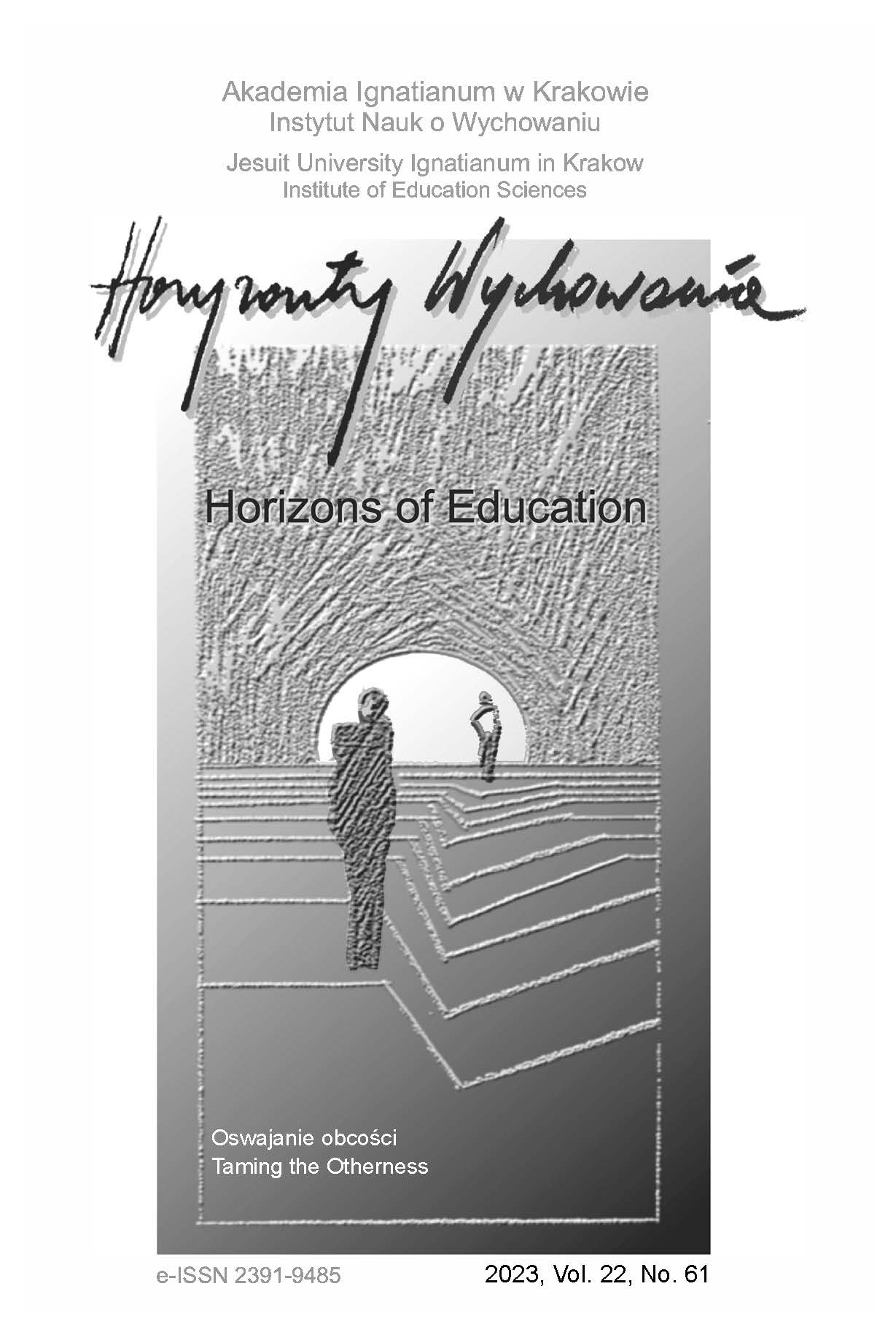Emotions Experienced by English Teachers While Taming the Unknown (Distance Learning) During the COVID-19 Pandemic
Abstract
RESEARCH OBJECTIVE: The aim of the current study was to investigate emotions accompanying teachers in the process of getting accustomed to the new situation of distance learning during the COVID-19 lockdown in secondary schools in Poland.
THE RESEARCH PROBLEM AND METHODS: The research questions concerned the type of emotions teachers experienced, the triggers provoking most positive and negative emotions, as well as factors influencing teachers’ emotional states. The tool used in the study was the questionnaire by means of which the teachers were to identify emotions they had towards people who took part in the lesson, the lesson itself, the equipment used and other interrelated issues in line with Yik’s circular model of affect.
THE PROCESS OF ARGUMENTATION: The way teachers reach students remotely, often unfamiliar, unknown to many of the educators, has been further complicated by the COVID-19 pandemic. In addition to fulfilling their teaching duties, the teachers had to face extra-curricular difficulties and dangers, such as infection, isolation and quarantine, and gradually get used to the new situation.
RESEARCH RESULTS: The obtained results indicate emotional changes at each stage of getting accustomed to the new situation. The tendencies observed could be described as increasing negative feelings experienced by the sample at the very beginning of distant education that lowered towards the end of the school closure periods, and/or were replaced with positive ones.
CONCLUSIONS, INNOVATIONS, RECOMMENDATIONS: The author presents measures to be used to improve the school situation, among which an immediate solution lies in the courses currently offered by many institutions, and IT support offered by schools. Also, ideas on how to expand the current study, involving those allowing for a comparison between different levels of education and among other participants of distance learning, such as primary/university teachers as well as learners and their parents and siblings.
References
Buchner, A., Majchrzak, M., & Wierzbicka, M. (2020, May). Badanie edukacji zdalnej w czasie pandemii. Centrum Cyfrowe. https://centrumcyfrowe.pl/edukacja-zdalna
Christensen, E.W., Anakwe, U.P., & Kessler, E.H. (2001). Receptivity to distance learning: the effect of technology, reputation, constraints, and learning preferences. Journal of Research on Computing in Education, 33(3), 263-279. https://doi.org/10.1080/08886504.2001.10782314
Isik, A.H., Karakis, R., & Güler, G. (2010). Postgraduate students’ attitudes toward distance learning (the case study of Gazi University), Procedia – Social and Behavioural Science, 9, 218-222. https://doi:10.1016/j.sbspro.2010.12.139
Kruszewska, A., Nazaruk, S. & Szewczyk, K. (2022). Polish teachers of early education in the face of distance learning during the COVID-19 pandemic – the difficulties experienced and suggestions for the future. Education 3‑13, 50(3), 304-315. https://doi.org/10.1080/03004279.2020.1849346
Nowak, K. (2021). Nasilenie stresu i style radzenia sobie z nim u nauczycieli w epidemii COVID-19. Annales Universitatis Mariae Curie-Skłodowska. Sectio J. Paedagogia–Psychologia, 34(3), 7-24. https://doi:10.17951/j.2021.34.3.7-24
Özüdoğru, G. (2021). Problems faced in distance education during COVID-19 pandemic. Participatory Educational Research, 8(4), 321-333. http://dx.doi.org/10.17275/per.21.92.8.4
Papaja, K. (2021). Negative emotions experienced by Polish English teachers during COVID-19: A qualitative study based on diaries. Lublin Studies in Modern Languages and Literature, 45(3), 3-17. https:// doi10.17951/lsmll.2021.45.1.3-17
Reeve, J. (2015). Understanding motivation and emotions. Wiley.
Richards, J.C. (2020). Exploring emotions in language teaching. RELC Journal, 53(1), 1-15. https://doi.org/10.1177/0033688220927531
Szorc, K. (2016). O irytacji bez irytacji. Parezja, 2(6), 11-22. https://doi:10.15290/parezja.2016.06.02
Taplin, R.H., Kerr, R., & Brown, A.M. (2013). Who pays for blended learning? A cost–benefit analysis. The Internet and Higher Education, 18(1), 61-68. https://doi.org/10.1016/j.iheduc.2012.09.002
United Nations Educational, Scientific and Cultural Organization (UNESCO) (2020). Adverse effects of school closures. UNESCO.
Yin, H.B., Huang, S., & Wang, W. (2017). Work environment characteristics and teacher well-being: The mediation of emotion regulation strategies. International Journal of Environment Research Public Health, 13(12), 907-923. https://doi.org/10.3390%2Fijerph13090907
Copyright (c) 2022 HORIZONS OF EDUCATION

This work is licensed under a Creative Commons Attribution-NoDerivatives 4.0 International License.
Authors who publish in this journal agree to the following terms:
- Authors retain the copyright to their work while granting the journal the right of first publication. The work will be simultaneously licensed under a CC BY-ND license, which permits others to share the work with proper credit given to the author and the original publication in this journal.
- Authors may enter into additional, non-exclusive agreements for the distribution of the published version of the work (e.g., posting it in an institutional repository or publishing it in another journal), provided that the original publication in this journal is acknowledged.
We allow and encourage authors to share their work online (e.g., in institutional repositories or on personal websites) both before and during the submission process, as this can foster beneficial exchanges and lead to earlier and increased citations of the published work. (See The Effect of Open Access). We recommend using any of the following academic networking platforms:





